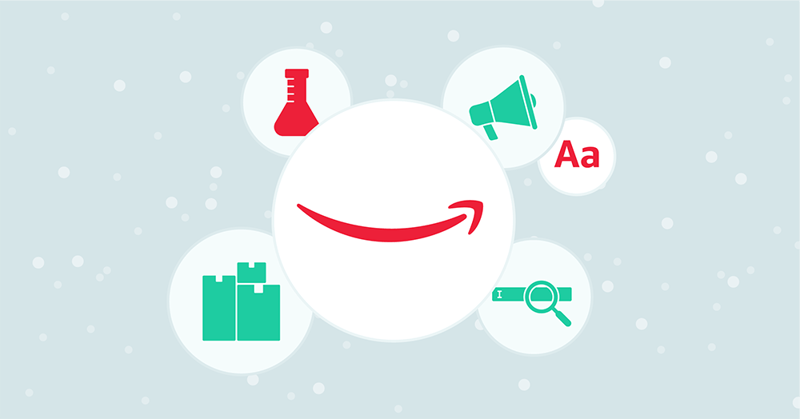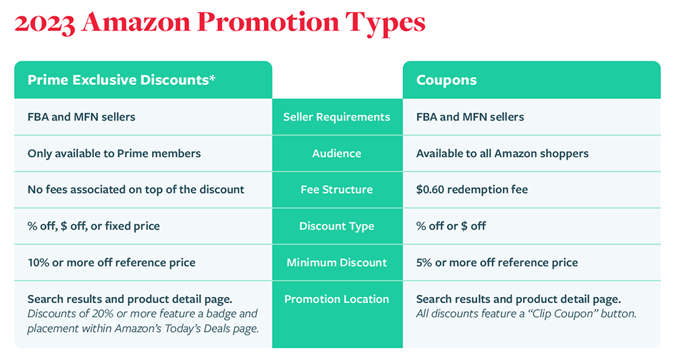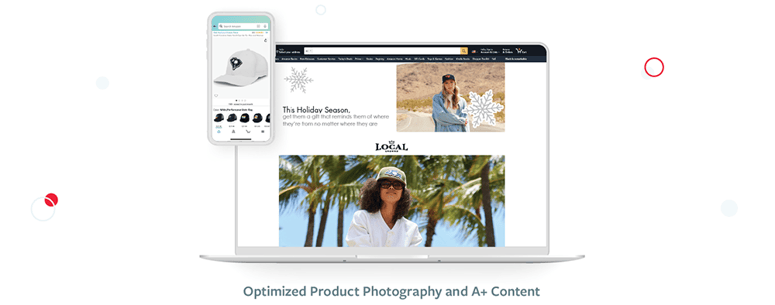
As the 2023 holiday season approaches, consumers are gearing up to fill their virtual shopping carts with gifts (for others… and for themselves). In fact, 48% of Amazon consumers say they shop for themselves on Black Friday and Cyber Monday—which means whether you sell giftable items or not, it’s critical for most brands to take advantage of the sheer influx of traffic experienced during this peak Amazon shopping season.
In addition to standard holiday shopping events like Black Friday and Cyber Monday, Amazon has announced a fall Prime Big Deal Days event (their second Prime Day event of the year) that will serve as the unofficial kickoff to the holiday shopping season. The two-day sales event will take place October 10-11.
There’s still time for Amazon brands and sellers to implement proven revenue-driving tactics now and win over new and repeat customers headed into 2024—as long as you act fast on the following:
Building on the success of last year’s peak shopping seasons, Amazon will once again host two separate Prime Day events. While Prime Day 2023 has already come and gone, Amazon’s Prime Big Deal Days event will take place October 10-11, 2023.
As you prepare your holiday 2023 sales plan, look at the data from recent Prime Day events and previous Q4 sales. Identify key consumer behavior insights and seasonal trends, then adjust your Amazon strategy accordingly, focusing on inventory forecasting, keyword research, advertising performance, and listing optimization.
Remember, almost 50% of Amazon shoppers aren’t just shopping for others during the holiday season, they’re “gifting” themselves as well—which means it’s crucial to capitalize on the surge in traffic during this peak shopping period. Think of Prime Day 2023 and Prime Big Deal Days as a crash course when laying out your holiday sales strategy: What worked and what didn’t? Did consumers behave as they have in the past or did they act unexpectedly? It’s also important to dive into any Amazon customer reviews that you received during both Prime Day events and use them to improve the shopping experience. Now’s the time to make strategic inventory changes, product listing optimizations, and ad campaign enhancements to maximize winter holiday sales potential.
Think of Prime Day 2023 and Prime Big Deal Days as a crash course when laying out your holiday sales strategy: What worked and what didn’t? Did consumers behave as they have in the past or did they act unexpectedly? It’s also important to dive into any Amazon customer reviews that you received during both Prime Day events and use them to improve the shopping experience. Now’s the time to make strategic inventory changes, product listing optimizations, and ad campaign enhancements to maximize winter holiday sales potential.
From monthly restock limit changes and new inventory solutions, to continuous supply chain challenges and shifting consumer behaviors, Amazon inventory management is evolving every day. It’s important to keep a close eye on fulfillment trends and adapt your approach accordingly.
If you’re facing supply chain and sell-through woes, or issues with stock limits, consider these tactics for the inventory you have on hand:
If you’re ready to refine or expand your fulfillment strategy, we suggest looking into Amazon’s growing fulfillment offerings:
Analyzing data from previous Prime Day or past seasonal events can unlock valuable insights into how discounts and promotions influence consumer behavior. Our team has seen that products with a Prime Exclusive Discount saw up to a 5x increase in sales compared to products that didn't feature a discount—and Amazon has reported that even non-promoted products saw a 19% increase in median sales during Prime Day for brands running promotions with any Amazon Ads solution.
Consider running holiday-specific promotions to drive sales for your top products. Make sure to review the deal types that Amazon offers during the holiday shopping season:
When it comes to testing seasonal ad and content optimizations, there’s no time like the present! Now is the time to experiment with keywords, messaging, and creative elements to ensure that you understand what’s most compelling to your audience. With Amazon’s Manage Your Experiments feature, sellers can conduct A/B tests on product photography, titles, and A+ Content. Monitor tests closely, review the results, and adapt your strategies to keep top performers live throughout the holiday shopping season.
For Amazon Ads specifically:
Wondering exactly when you should start implementing your holiday marketing and advertising efforts? The answer depends on your brand’s specific category and product offerings. We suggest analyzing sales data from the previous year to estimate when your seasonal sales will start to ramp up. Keep in mind, it can take up to eight days for Amazon A+ Content updates to be approved and show live on your listings.
Think of your Amazon presence as a brick-and-mortar store—your Storefront is an opportunity to attract and welcome customers to your brand, and your product listings are the aisles shoppers browse to find exactly what they’re searching for.
Take a good look at your Amazon Store and listings, and consider the following:

Not all Amazon sellers leverage seasonal content, so incorporating festive visuals will set your listings apart from competitors, encourage longer browsing sessions, and ultimately convert more customers.
When it comes to driving traffic to your Amazon listings, off-platform efforts like influencer marketing, social media, and Sponsored Display ads can be just as crucial as on-platform advertising. In a recent SupplyKick survey, 66% of consumers say they've purchased a product on Amazon after seeing it on Google, Facebook, Instagram, TikTok, etc.
Amazon is also investing in the off-platform traffic trend: US Brand Registered sellers can enroll in Amazon's Brand Referral Bonus program, earning an average of a 10% bonus from each sale driven by non-Amazon marketing efforts. Brand Registered sellers can also take advantage of Amazon Attribution analytics to track off-platform conversions.
We recommend enlisting these key strategies to drive off-platform traffic to your Amazon Store or product listings:
Finding yourself saying “bah, humbug!” as you start thinking through your holiday sales or 2024 strategy? SupplyKick can help.
Since 2013, we’ve been working with partners to simplify their ecommerce selling experience on Amazon, Walmart, Target+, and beyond. As an extension of your team, we take the daily grind of Amazon management off your plate so you can focus on other aspects of your business. Connect with our team to start a conversation about your Amazon strategy and subscribe to our newsletter for the latest marketplace news and trends.
Lorem ipsum dolor sit amet, consectetur adipiscing elit


Sign up to receive our newsletter for growth strategies, important updates, inventory and policy changes, and best practices.
These Stories on Advertising
For press inquiries, please contact Molly Horstmann, mhorstmann@supplykick.com